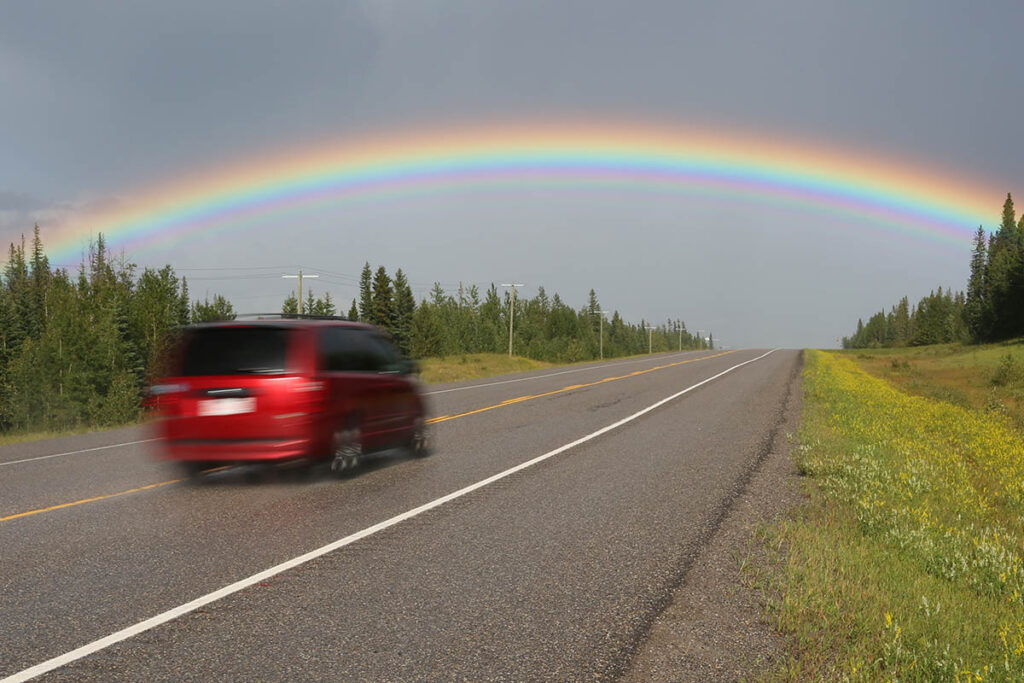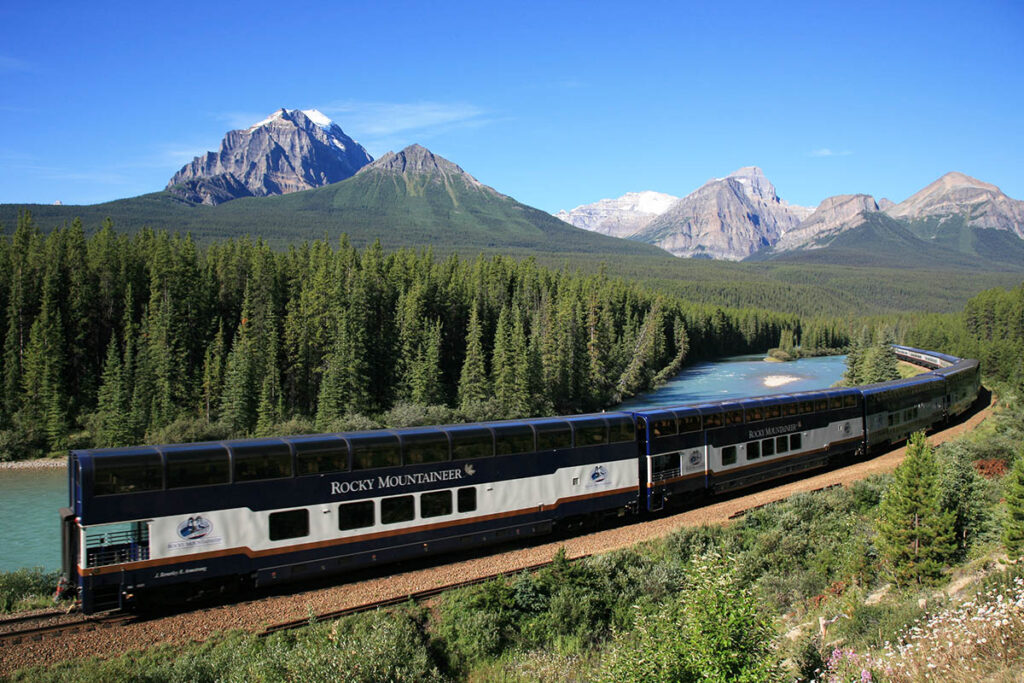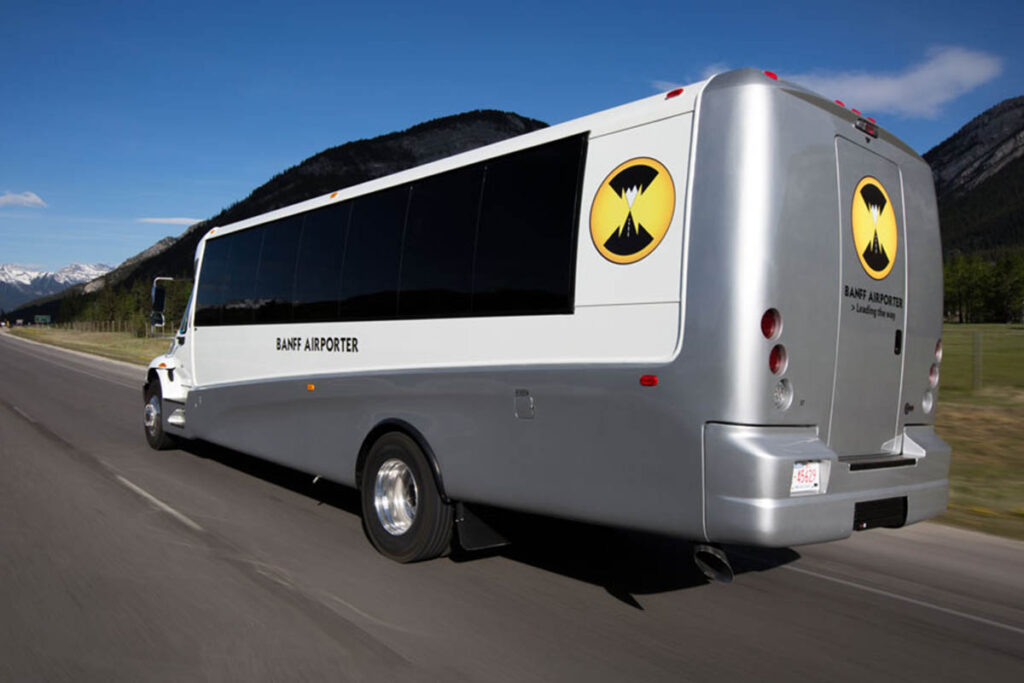Getting to the Canadian Rockies
Getting to the Canadian Rockies is easy by road, rail, or air. The main gateway city for flights from North America and Europe is Calgary, while Vancouver is also a popular starting point. From these two cities, as well as points across Canada, scheduled train and bus services pass through the region year-round.
Driving to the Canadian Rockies
Driving to the Canadian Rockies is possible from anywhere in North America but is most convenient if you live in western Canada or the Pacific Northwest. Driving saves money on transportation costs and allows you to bring along camping equipment and sporting gear such as mountain bikes and canoes.
Driver’s licenses from all countries are valid in Canada for up to three months. You should also obtain a one-year International Driving Permit before leaving home (U.S.-licensed drivers do not require an IDP to drive in Canada) if your license is in a language other than English. Inexpensive and available from most motoring organizations, an IDP allows you to drive in Canada (in conjunction with your regular license), without taking a test, for up to three months.
You should also carry vehicle registration papers or rental contracts. Proof of insurance must also be carried, and you must wear seat belts.
All highway signs in Canada give distances in kilometres and speeds in kilometres per hour (kph). The speed limit on most national park highways is 90 kph (56 mph), including the Trans-Canada Highway through Banff and Yoho National Parks.
Routes to the Canadian Rockies
The TRANSCANADA HIGHWAY (Highway 1) stretches from one end of Canada to the other and is the world’s longest national highway (7,821 km/4,860 miles from end to end). It passes through the Canadian Rockies towns of Canmore, Banff, and Golden. The first major city east of the mountains is Calgary, 128 kilometres (80 miles) from Banff along the TransCanada. The northern route across western Canada is the YELLOWHEAD HIGHWAY, which passes through the town of Jasper, in Jasper National Park, 364 kilometres (226 miles) east of Edmonton. From Vancouver, on the west coast of British Columbia and the major air gateway from Asia, it’s 836 kilometres (519 miles) west to Banff along the TransCanada Highway and 781 kilometres (486 miles) northwest to Jasper along Highway 5. The TransCanada and Yellowhead Highways are linked within the Canadian Rockies by the ICEFIELDS PARKWAY, which runs parallel to the Continental Divide between Lake Louise and Jasper, a distance of 230 kilometres (143 miles). The DAVID THOMPSON HIGHWAY runs west from Red Deer to the Icefields Parkway halfway between Banff and Jasper.

Westbound on the David Thompson Highway.
Driving from the United States
Reaching the Canadian Rockies from the United States is possible via a number of routes. From Seattle, the shortest approach is to follow I-5 north to Vancouver and jump on the TransCanada Highway. If you’re travelling north from the Rocky Mountain states, Highway 93 will provide a warm-up for the mountain scenery north of the border. This route crosses into Canada north of Kalispell, merging with Highway 95 from Spokane, Washington, at Cranbrook, then continuing up the west side of the Canadian Rockies to Radium Hot Springs, where you can cut through Kootenay National Park to Banff. Much quicker is I-15, which begins in Los Angeles, looping through Las Vegas and Salt Lake City on its way north to Montana. I-15 enters Canada at the 24-hour Coutts/Sweetgrass border crossing south of Lethbridge, Alberta. From Lethbridge, it’s a three-hour drive to Banff, or you can choose to head west to Waterton Lakes National Park. Total distance from Los Angeles to Banff via I-15 is 2,600 kilometres (1,617 miles). From the Midwest and eastern states, there are innumerable options, including I-94 through Minneapolis or crossing into Canada east of the Great Lakes and driving the entire way within Canada.
Getting to the Canadian Rockies by Air
The closest city to the Canadian Rockies is Calgary, Alberta, 128 kilometres (80 miles) east of Banff, where CALGARY INTERNATIONAL AIRPORT is a hub for flights from across Canada and the United States. Vancouver, British Columbia’s largest city, is a major gateway to the mountains for international travellers. It lies on Canada’s West Coast, 830 kilometres (515 miles) west of Banff. Edmonton, 360 kilometres (224 miles) east of Jasper, also has an international airport. Even though Vancouver is a lot farther from the Canadian Rockies than Calgary, it is a popular starting point, as the trip across British Columbia by rail, bus, or car is spectacular.
Getting to the Canadian Rockies by Rail
The original transcontinental line passed through Banff, crossing the Continental Divide at Kicking Horse Pass and continuing to Vancouver via Rogers Pass. But this form of transportation, which opened up the Canadian Rockies to tourists, began to fade with the advent of efficient air services, and the last scheduled services on this line ended in 1991. Government-run VIA Rail provides coast-to-coast rail service using a more northerly route that passes through Jasper National Park. At Jasper, the westbound transcontinental line divides, with one set of tracks continuing west to Prince Rupert via Prince George and the other heading southwest to Vancouver. Another more luxurious option is the privately run Rocky Mountaineer, with summer service to Banff and Jasper from Vancouver.
VIA Rail
Government-run VIA Rail (416/366-8411 or 888/842-7245) provides passenger-train service right across Canada. The Canadian is a service between Toronto and Vancouver via Winnipeg, Saskatoon, Edmonton, Jasper, and Kamloops. Service is provided in two classes of travel: Economy features lots of leg room, reading lights, pillows and blankets, and a Skyline Car complete with food and bar service, while Sleeper Plus and Prestige Sleeper are more luxurious, featuring sleeping rooms, daytime seating, all meals, a lounge and dining car, and shower kits for all passengers. At Jasper, the westbound transcontinental line divides, with one set of tracks continuing slightly north to Prince Rupert. Along this route, the train makes three trips per week. It is a daytime-only service, with passengers transferred to Prince George’s accommodations for an overnight stay. It offers Economy and Touring Classes.
Rocky Mountaineer
Rocky Mountaineer (604/606-7245 or 877/460-3200) runs a luxurious rail trip between Vancouver and Banff or Jasper, through the spectacular interior mountain ranges of British Columbia. Travel is during daylight hours only so you don’t miss anything. Trains depart in either direction in the morning (every second or third day), overnighting at Kamloops. Trains terminate in Vancouver off Terminal Avenue at 1755 Cottrell Street (behind Pacific Central Station).

Rocky Mountaineer.
Getting to the Canadian Rockies by Bus
Airport Service from Calgary International Airport
Calgary International Airport, 128 kilometres (80 miles) east of Banff, is the main gateway to the Canadian Rockies. In addition to car rental desks, shuttle bus companies are represented opposite the baggage carousels. Companies that offer service out to the Canadian Rockies are BREWSTER EXPRESS and BANFF AIRPORTER. Brewster is the only one of these two services that continues beyond Lake Louise to Jasper.
Backpacker Bus to the Canadian Rockies
For young travellers on a budget, the MOOSE BUS ADVENTURES is an excellent way to travel to and around the Canadian Rockies and beyond. It runs along a number of different routes, including a seven-day loop originating in Vancouver and travelling to Jasper and Banff via Whistler, a three-day Banff-Jasper-Banff trip, and a two-day Banff-Vancouver shuttle with an overnight stop in Kamloops. On any of these trips, you can get on and off wherever you please (and jump aboard the next bus as it passes through) or bond with the crowd and stay on the fixed itinerary. Nights are spent at hostels en route. Food is extra, but often all travellers pitch in a token amount to purchase dinner at a grocery store along the way. Tours run three to seven times a week through an April-to-October season.
Getting Around the Canadian Rockies
For information on car rentals, shuttles, and gas stations, go to this page: Getting Around the Canadian Rockies.

The Banff Airporter en route to Banff from Calgary.
